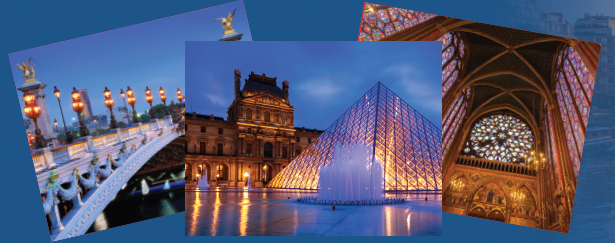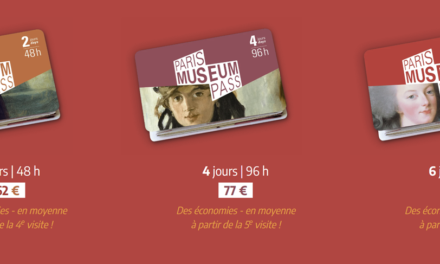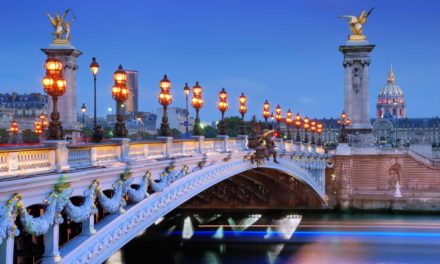The world is a very big place. And world travel is one of life’s great pleasures, as well as a certain means to expand yourself. There is no such thing as a trip that leaves us untouched. We return home from each travel experience a somewhat new person – larger and more aware, appreciative and with increased social and cultural capacities. “The world is a book, and those who do not travel, read only a single page” (St. Augustine).
But there is travel, and there is travel. On the one hand, there is travel as a tourist, or, even worse, as a tourist who is being herded around in a group, barely seeing anything except through the window of a bus, surrounded by other Americans in a gaggle of self-preserving befuddlement. Most often this is travel at blinding speed, where you barely tip your toes into the waters before you leapfrog to the next place, in an exhausting, mind-numbing marathon of trying to “see it all.”
Given the classically superficial and unsatisfying level of the ”tourist” travel experience, it is unfortunate that it does, of course, still cost money, as well as take up valuable time and energy. What is even more regrettable is that this type of travel obscures the delights and vivid experiences of a very different type of travel – the full experience of travel as a “traveler,” not a “tourist.”
How to Travel in France
This other, more immersive type of travel is unendingly life-changing and enthralling, captivating and engrossing, compelling and even habit-forming. As Daniel Boorstin says, a tourist is passive, expecting “interesting things to happen to him. He goes ‘sight-seeing.’” A traveler is active, “in search of people, of adventure, of experience.”
And so, when you travel to France, as is true for travel in any country, it will make all the difference if you resolve yourself to travel as a traveler, not as a tourist. Take charge of your trip and make it a “Great Trip”— an immersive trip—a trip of a lifetime. But how do you do this? Where do you go? Where do you stay? How do you get around? What do you do once you get there? And how do you connect with the people while you are there?
Envision Your Trip to France
Picture the start of your trip. You will fly into Paris. But you will not begin your travel experience in Paris. Instead, you will work up to Paris, and come back there as your last stop in France. When you land in Paris, you will take the “fast” train (the TGV—“Train à Grande Vitesse”—“train of great speed”) to the Loire Valley, where you will stay in Amboise, a charming medieval town that will make you feel almost immediately at home.
Lovely Amboise, with its Kings and Geniuses
In Amboise, you will build your confidence moving around and interacting with people. You will practice communicating back and forth as best you can in what may be for you very rudimentary French, thereby opening the way for the French to communicate back with you in what for them may be their very rudimentary English. And you will begin to experience the France of the French—the foods and wines, the history and philosophy, the stories and enthusiasms, the markets and sunsets over the river.
Amboise is the home of both a Royal Castle and a Château… one the home of Kings and the other the home of Leonardo da Vinci during the final three years of his amazing and ingenious life. There are wonderful stories to be discovered here— about Leonardo arriving in Amboise after traveling across the Alps, carrying with him the Mona Lisa as a gift for the King— about King Françoise I and Leonardo becoming close friends—about their homes being connected together by an underground tunnel so they could spend time together—about Leonardo dying in the Kings arms, and the king having him buried across the street in the church on the grounds of the Royal Castle.
While you are in Amboise, you will immerse yourself in this friendly, ancient town. You will walk the pedestrian street, looking up at the 14th century buildings above the colorful shops and bakeries, cafés and delicatessens. You will browse the shops to purchase “treasures” to take home, or delicious supplies for picnics along the Loire River and in the park outside Leonardo da Vinci’s home. While you visit Leonado’s château, Clos Lucé, you will take all the time you want or need to meander through the models (some full scale) of his intriguing inventions – the tank and the bridges—the self-propelled vehicle and the paddle boat—the helicopter and the parachute—all invented 500 years ago, even before the invention of steam power.
You will eat dinner at a memorable restaurant, at a lovely outdoor table, across the street from the Castle wall, ordering delectable French specialties like escargots, white asparagus, fresh fish and frites (the fries that only the French are able to make so tasty). You will do wine tasting in a “cave” (pronounced “kaave”) that tunnels into the base of the Castle wall, experimenting with the reds and the whites, as well as the lovely dry rosés, in order to select your favorites. If it is Wednesday or Sunday morning, you will visit the Amboise Market, where you will walk among the brightly-colored wares, people watching, and perhaps selecting a bright red flowered scarf or some cheese or dried sausages or several loaves of freshly-baked bread.
By your second day in town, you will feel comfortable and know your way around. At that point, you will begin to venture out to other Châteaus in the area, starting with Chenonceau, one of the loveliest.
Then on to Mont St. Michel and Normandy
Then on to Mont St. Michel, then to Bayeux, and then to Paris, staying for at least three days in each location, except for Mont St. Michel where you will stay for two nights out on the Mont, with the tides coming in to surround you at the speed of a galloping horse, then receding to reveal the sandy ground underneath. More soon about these destinations…
Why Make Your Trip Independently?
How will you accomplish all of this? And why would you attempt it on your own? You will accomplish this by reading and making full use of a written guide that will walk you through every step of the planning, arranging, preparation and packing before you leave, and every day of your trip once you arrive. Through this guide, you will be oriented and confident within the first hour you spend in each of your home bases. And you will know exactly how to travel between these locations by train, while enjoying the lovely landscapes of France along your journey. This guide will be supplemented by directed use of the Internet so that all of your arrangements will be made before you leave and your trip will be seamless and delightful, as well as relatively economical.
Why would you attempt to do this on your own? Because this type of travel in France will draw you in and give you experiences of a lifetime. Because you will come home filled with vivid memories of the places and the people, the culture and the “joie de vivre,” the lifestyle and the timeless beauty of this marvelous country. Because once you are home again, you will soon begin to imagine yourself going back, and will begin plotting to return.



